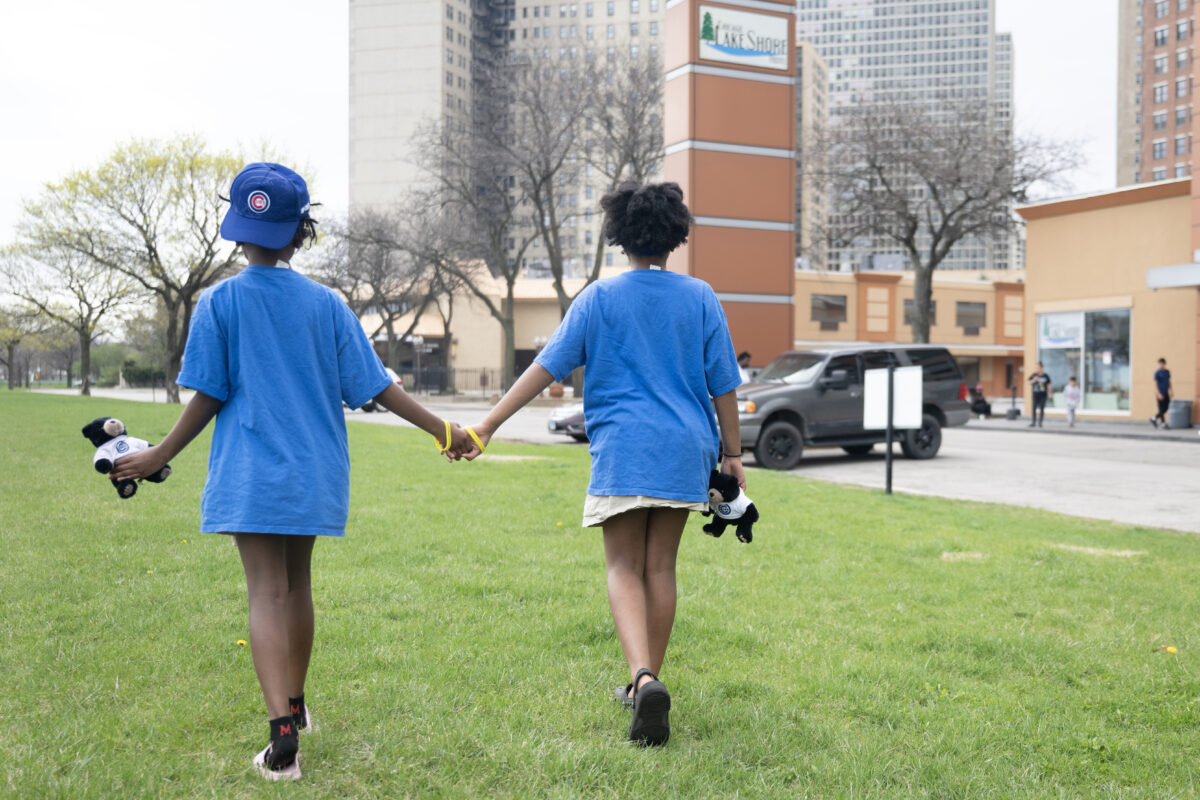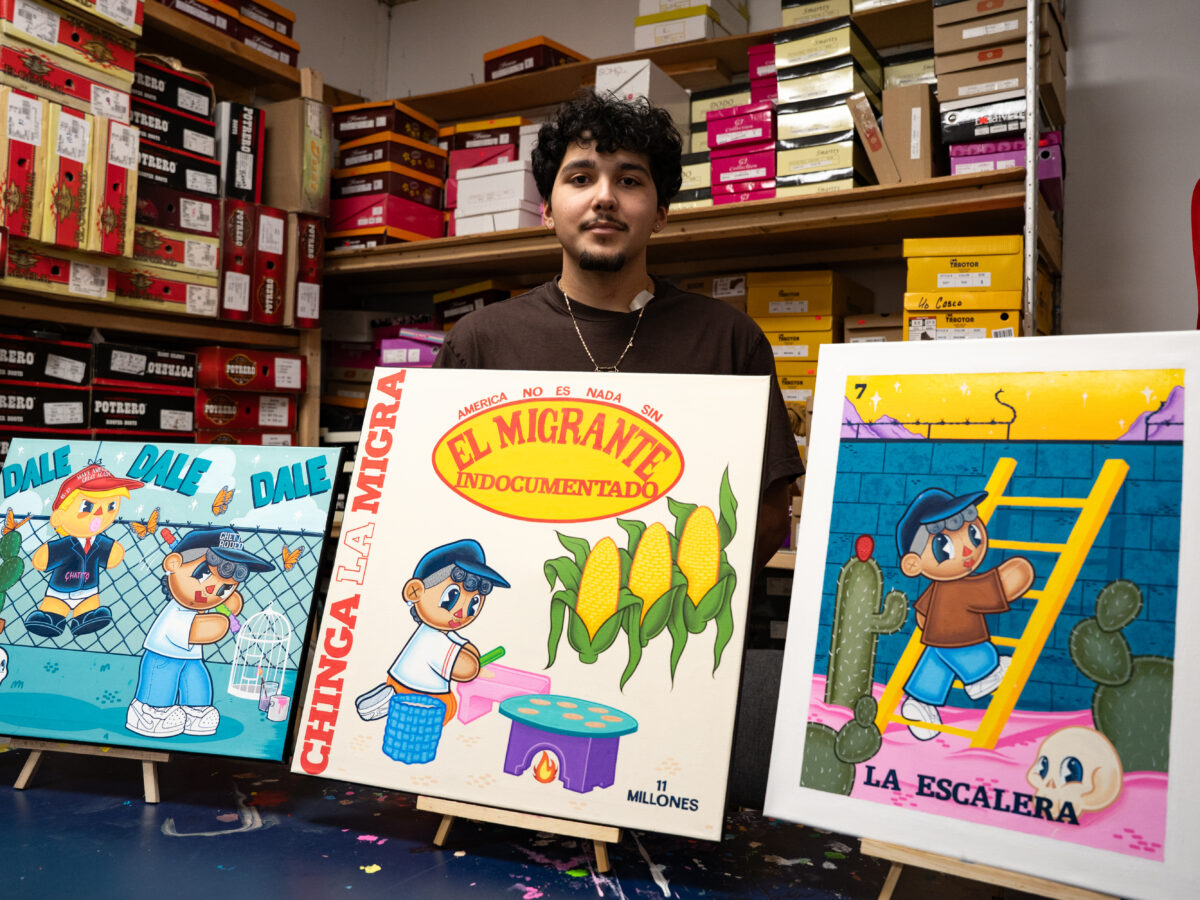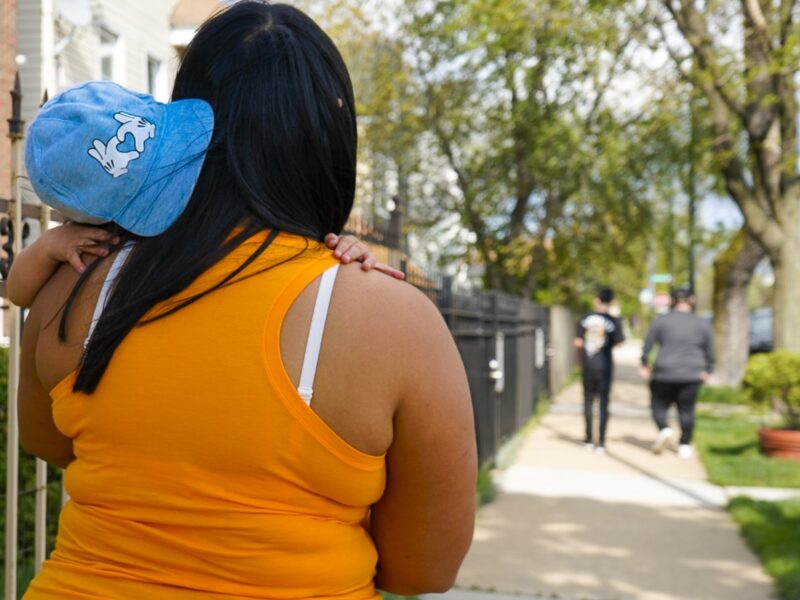This story is co-published with the Hyde Park Herald.
Carlos and Rocío Rojas arrived in Chicago last June with their fifteen-year-old daughter, Yuliana, after a months-long journey through seven countries. Fleeing Venezuela’s collapsed economy and political repression, they often traveled long distances on foot, sometimes sleeping on the streets.
After obtaining an asylum appointment and crossing the border in San Diego, they found a charity organization that bought them tickets to O’Hare International Airport. The family chose Chicago because Carlos Rojas had relatives there.
Their accommodations, however, were cramped and unsustainable. They decided to go to the “carpas,” tent shelters for new arrivals the city set up as part of its “landing zone.” After screening, the family was referred to a shelter in Hyde Park.
That shelter, housed in a shuttered Best Western hotel, was one of two temporary facilities set up by the city and state in the neighborhood. It was part of an ad hoc network of more than a dozen shelters opened in Chicago since August 2022, when Texas Gov. Greg Abbott began busing thousands of migrants to sanctuary cities.
In all, over the past two and a half years, more than 51,000 migrants, most of whom are Venezuelans seeking asylum, have arrived in Chicago. While many have settled here, thousands have continued their journey to other destinations.
The Rojas family told the Herald and Weekly that they cannot imagine where they would be today without the attention they received at the Hyde Park shelter.
“The shelter for us was a blessing because when we arrived it oriented us,” Carlos Rojas said. “They taught us how to move around, how to integrate into society a little better. To understand the laws, the rules, the norms.”
But not everyone in the neighborhood feels so positively.
When the first of two migrant shelters opened in Hyde Park in September 2023, which took in more than 300 people, many residents were outspoken in their disapproval of asylum seekers moving into the neighborhood. Community meetings about the issue were divisive—while some attendees encouraged the neighborhood to open its arms, a louder contingent decried the city’s decision.
Opponents frequently criticized the city’s unilateral decision to open the shelter and its spending on migrants. Others have voiced fears of decreasing property values, as well as xenophobic accusations that asylum seekers spread sickness and crime.
In the summer of 2024, almost a year after the first shelter opened, the state opened a second migrant shelter in an adjacent building, a former Best Western hotel. Months later, as the pace of new arrivals to Chicago slowed, the city closed the first Hyde Park shelter.
Last December, a joint effort between the city and state repurposed the Best Western shelter to house all Chicagoans experiencing homelessness. The shelter is now part of Mayor Brandon Johnson’s One System Initiative, which runs five integrated shelters for both permanent residents and new arrivals, rather than separate facilities.
The transition comes amid rising homelessness in the city. Last year, the number of longtime residents living in shelters or on the streets increased by more than 1,000 people, according to the city’s most recent point-in-time count—a 25 percent increase. In all, the projected number of people who experienced homelessness in Chicago last year was nearly 19,000.
The same month the Best Western shelter opened to anyone in need, Tahkia Millbrooks and her four children moved in.
Millbrooks, who grew up in South Shore, has received disability benefits since infancy, which has made it difficult to hold a steady job.
She and her children, who are eight, eleven, twelve, and thirteen, had been living with one of her sisters in Fort Wayne, Indiana. But her sister, who has kids of her own, had to downsize from a three-bedroom to a two-bedroom unit, which meant that there was no longer enough room for Millbrooks and her children.
So the family moved back to Chicago to stay with Millbrooks’ other sister on the West Side. But things became cramped there too, so Millbrooks’ sister called the city to inquire about a shelter placement.
At Hyde Park’s Best Western hotel, Millbrooks said their living situation is better, but still cramped.
When she and her kids moved there in December, they shared a room with another family—in such a small space, conflicts were common. They now have the room to themselves and share a bathroom with two other families.
Nevertheless, her kids said they feel taken care of.
“They clean the room two times a week and they take the dirty clothes and wash them,” Jershawn, her oldest son, said.
Still, Millbrooks feels the family has been at the shelter for “too long.”
She’s looking for apartments near her sister’s home and her children’s school, but most are between $1,400 and $1,500 a month—much higher than the $890 she gets from disability each month. With her oldest graduating middle school this year, Millbrooks said she’s also trying to save money for trips and other high school needs.
“I just want to go somewhere where it’s comfortable and where it’s warm,” Millbrooks said.
Until she finds stable housing, Millbrooks endures a grueling daily commute—up to two hours on multiple buses—to get her children to and from KIPP Academy, a charter school in Austin. Though there are closer schools, Millbrooks didn’t want her kids to have to start over somewhere new.
“I have to make sure they get home safe,” she said.
Finding and making home
In addition to three meals a day, cleaning and laundry services, the shelter offers a number of programs to help residents find housing, jobs and integrate into their new communities.
These services are run by New Life Community Church and New Life Centers, the religious nonprofit contracted by the state to operate multiple shelters. One key offering is an eight-week acculturation course for new arrivals, featuring daily English lessons and classes on public transit and Chicago history.
“We focus all our time on programming,” Joanna Jauregui, the program manager for New Life, said. “We do these things to help [residents] on their walk and integrate them back into society so that they can be successful, so their rate of success can be higher when they become independent.”
For the Rojas, the shelter’s services and classes were invaluable.
“The treatment was excellent, truly excellent,” Rocío Rojas said. “The organizations were very attentive. They provided many resources for us to learn, educate ourselves and integrate into the society that we will begin to belong to.”
Rocío Rojas said she and her family took part in English lessons and classes to learn about the local culture. Sometimes they took field trips to museums, where the Rojas learned about Chicago’s founding and the Great Fire of 1871.
“We love Chicago,” Rocío Rojas said.
The Rojas said that residents also get referred to other organizations that offer legal support or case management. Carlos and Rocío Rojas were referred to Centro Romero on the North Side, where they applied for their work permits.
It was during one of those acculturation lessons where Carlos Rojas heard about a construction job from a classmate.
“I learned on the job. The [boss] said I didn’t need experience or anything, just a desire to learn,” Carlos Rojas said. “And it went very well…I had to do construction work, put up drywall, sometimes I cleaned houses and sometimes I remodeled bathrooms.”
But he liked the pay: “It was a little something I could save to eat out and do things” with the family. Now he has a better-paying job doing car transmission repairs.
Rocío Rojas first did housekeeping at a downtown hotel, but then got a job at the Little Village nonprofit SER Central States, where she works helping other migrants.
During afternoon or weekend walks that the family would take outside the shelter and around the block, Yuliana identified Kenwood Academy nearby. When reps from Chicago Public Schools showed up at the shelter, she told them she was interested in enrolling there, and although they told her “it’s complicated,” she filled out the application and got in.
Yuliana said she felt welcomed at her new school. She said the learning environment is more accepting than in schools she had attended in Colombia and Venezuela.
“Even though I’m from another country, even though I speak another language…It’s like people don’t treat you differently,” Yuliana said. “They try to teach you things.”
Since the shelter opened up to Chicago’s homeless population, New Life has expanded its programming. New offerings include weekly volunteer opportunities at food pantries to help expose residents to “working situations without the commitment.”
“Because maybe they’re going through something, or PTSD, or any trauma,” said Jauregui. “This can slowly integrate them back into working.”
Given that almost half of the shelter’s residents are children, a lot of the new programming is geared towards kids.
Millbrooks’ children just wrapped an eight-week course in partnership with the Chicago Cubs, where Chicago-area coaches taught them how to play baseball. It culminated in students attending a Cubs game late last month, where Millbrooks’ daughters, Jamiya and Jameyla, were chosen to walk out onto the field.
Her two youngest children told the Herald that they’re eager to play more sports.
When asked what they like to do for fun, the second-grader and sixth-grader paused briefly before answering excitedly: “baseball” and “basketball.”
Neighborhood tensions persist
Today, more than 400 migrants and permanent residents live at the Best Western shelter. But opposition has far from quieted down.
But for the past few months, a group of residents going by the name Hyde Park Neighbors Preserving Community have been working to pump the brakes on these plans before they become permanent.
In March, the group launched an online petition calling on residents to “protect Hyde Park-Kenwood” and oppose the shelter, which has since garnered more than 1,200 signatures. In it, the authors once again take issue with elected officials’ unilateral decision to make the shelter permanent, and argue it could “significantly impact our quality of life, safety, infrastructure, and property values.”
In a recent community meeting hosted by the group, attendees presented a catalog of grievances about the shelter and its residents. They presented lurid photos—including of public urination, street vending without permits, trash, rodents, and large crowds—to back up their claims.
“The city never engaged with our community,” Cathy Perry, one of the event’s organizers, said at that meeting. Elected officials, she argued, were “shifting the landscape of our neighborhood and quality of life overnight.”
Other attendees also alleged an increase in crimes such as drug dealing and prostitution, though these claims were unsubstantiated, and descended into screeds against ‘illegal immigrants.’
In response to neighbors’ complaints, local state Rep. Curtis Tarver (D-25th) has joined the push to stop the shelter.
In a March letter to the Governor’s Office of Management and Budget, Tarver wrote that the $91.5 million in Gov. JB Pritzker’s fiscal year 2026 budget proposal for the initiative should be withheld until “neighborhood concerns are addressed and a plan inclusive of all voices is solidified.” As of press time, May 5, budget negotiations are still underway.
While the city and state work to finalize these plans, Hyde Park Neighbors Preserving Community has turned its attention to raising funds to retain an attorney to file a lawsuit and injunction.
Amid this opposition, the Rojas left the shelter and moved into a residence nearby. Through Facebook groups and searching on Zillow, they found a landlord who rented them an apartment and didn’t ask them about their immigration status.
The family said they haven’t directly experienced discrimination, but have heard the complaints about the shelter.
The opposition “is a little scary, the whole situation is a little scary,” Rocío Rojas said. “Sometimes we go out feeling a little afraid because we don’t know what we might face if we leave the house.”
Carlos Rojas believes that the shelters kept the migrant surge from becoming a bigger crisis in Chicago.
“People would have to beg for money or sleep on the streets to survive,” Carlos Rojas said. “Not everyone who is in a shelter or comes from a shelter is a bad person. Nor because they’re from Latin America or because they’re migrants.”
Zoe Pharo is a staff writer at the Hyde Park Herald. Jacqueline Serrato is the editor-in-chief of the Weekly.




